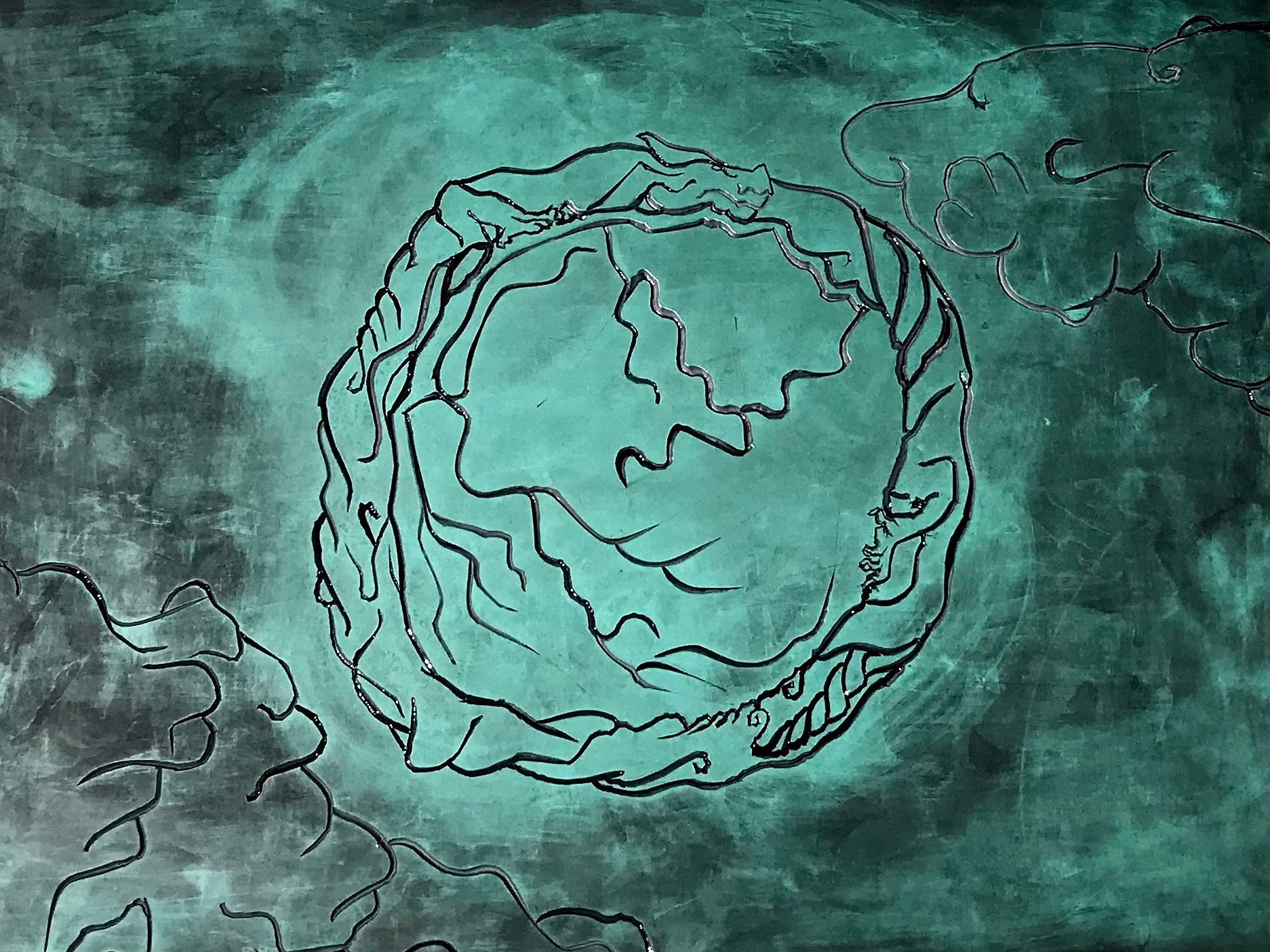Holding onto Creativity while Anxiety Tried to Drag Me Out to Sea: An Artists perspective
“I hated being on meds but I know that it also stopped Anxiety from drowning me. Off the meds I was in a place of melancholy. Antidepressants were like the rope that stopped me being dragged out to sea. But it also felt like the rope was cutting me in half, when it tried to cut out my creativity.
I hate it when I can’t create. It is depressing not being able to create.

There were moments I could climb up the rope, when I could hold onto my creativity. It didn’t stop Anxiety, but it alleviated the pain at least for a time.
I remember one way I held onto my creativity while on medication. I kept a word bank, where I wrote down a word, a sound or a sentence that I found interesting. I thought that if I felt the need to be creative, but couldn’t, that I would open the word bank and find a descriptor that would help me. I used to enjoy writing and languages and I would draw a word from the bank to get inspiration. I could use a word to prompt me to do a drawing or inspire a character based on the feeling I would get from the word. For example, to me the word Nimbus creates a feeling of wind and so I created a character featuring a long cloud coming out of the back of their head, a mask and cat eyes.
It’s much easier to make art when you’re not on medication because I use emotion to inspire me. Because on medication I was not feeling, I would use words not emotions to create. I drew on words if I wanted to draw or do something creative or to think a certain way.
I’ve always been in to creating worlds, developing them, creating civilisations, stories and characters and I play Dungeons and Dragons. When I dropped out of school early, my creative writing teacher approached me and spoke about her hopes that I would go to university and use my creative writing skills. She was the one that introduced me to word banks. It sounded like a nice idea. I am grateful she went out of her way to share that tool with me. It ended up being very useful. Drawing on the word bank to keep creating was everything. It kept me sane. I was able to continue to express myself.
Eventually I found the confidence to stop taking antidepressants. I felt like they were holding me back. I also know that if you are using your mental illness as a driver for creativity, it could be damaging. There is a good reason for needing medication. It’s important to find a balance. I am still trying to find this balance.”
Some Thoughts on Passion in Art and Life
“I don’t necessarily need passion to be creative. I use emotion to make art. If there is no emotion to grab onto, that would mean I am retreating back into a melancholic phase. Some art pieces I’m passionate about. Other times it’s just about doing something with myself. I wouldn’t say I’m passionate about my art, but I am passionate about other people making art and helping other people grow as people. I use social media to talk to people about art, connect with those who need help with their art, make friends and even manage my anxiety.
For me, making art is more of a need than a want, a way of expressing my feelings. I sometimes rely on Anxiety to help me create because of the feelings it gives me. Making art is a way to vent or express myself, whether that is through writing, singing, drawing or composing music.

There is a passion that I lost when I was on medication – the passion for learning, education and introspection. Bettering myself is a passion of mine. When I was on meds, I had no passion. I felt like I was missing out.
I remember the feeling I got in High School when I approached the art room door and the expectation of what lies on the other side. It was the only class I was interested in and excited about. It was the only place I could create and do whatever I wanted as long as I followed basic instruction. This experience gave me the courage to leave High School. I had become stagnant but the Art Room Door let me see what I would be free to do, and I had a clear vision of what I wanted to do. I had a vision of getting a studio, a space of my own to create and meet people who also wanted to create. I feel I have a lot I could teach people about creating art, to help them hold onto creativity or find the courage to start something new. I hope to inspire someone to take the step to do something they want to do.
For anyone who might have lost their passion, I would encourage them to try creating something. And of course, failing is completely fine. Make sure you continue to experience. You can still entertain yourself without passion.”
An Artists Perspective for Creating a Life of Colour when the Monochrome of Melancholy tries to Seep Back in
“Melancholy is the absence of feeling. It is monochrome, no variety in colour.
Going from melancholy to feeling sadness is like adding dark blue. At least there is colour. I can feel.
Looking back, I’ve learnt how I have added colour back into my life.
Talking to friends adds dark blue, magenta, red or yellow.
Exercising can add colour too.
Drawing, painting, making art, walking in nature for inspiration, spending time with my dog, cleaning. It all helps.
All these things take motivation. It’s sometimes easier not to do them. Stubbornness and desperation force me to do them. Stubbornness is a refusal to back into the spiral of melancholy. Desperation stops me from falling into it. I really don’t like feeling melancholic. I don’t want to just exist. I want to do the things that make me feel colour.
Sleeping is like putting water over the palette. It resets things. Waking up can reveal different colours.

In an art class, I would tell a hesitant student to just start adding colour. It’s the same with melancholy or sadness. Just add yellow to the grey and see what happens. Just walk over to the paint and put it on the board. Do whatever adds colour for you. All you can do is try and see what emerges.
I learnt to paint through trial and error. I learnt through repetition. If you don’t know how to draw a hand, you draw a hand a thousand times. If you fail, you shouldn’t be disappointed. When you fail, you’re still learning.
If the colour is bland, I make myself feel good with distractions to lift me up. For example, when I’m cleaning, I put on music. Without this, I’m just cleaning. Even at the time of doing something you feel bored or sulky, by the end, there is an injection of colour. Like when I was making my usual jewellery pieces, but I decided to add inscriptions – that was like adding yellow.
When Melancholy is around there is no enjoyment in life for me. No variation in colour. Helping others keeps me alive. It gives me a reason to exist. I like to be of use. I define myself by the value I hold to others. This is probably a selfish reason to help others, to help myself, but I think others gain from it. If I am going to be here, I might as well be here to help others. I can do that through art. I teach people about art because I want them to enjoy themselves. Even when melancholy is around, I still care about others.
I just have to keep creating. Just keep adding colour.”
If one of these stories resonates with you, we’d love to hear from you.
Opportunity to be an Outsider Witness to this story
After reading this story, we invite you to write a message to send back to the author. Here are some questions to guide your response.
- As you read this story, were there any words or phrases that caught your attention? Which ones?
- When you read these words, what pictures came to your mind about the authors’ hopes for their life and what is important to them (ie. dreams, values and beliefs)? Can you describe that picture?
- Is there something about your own life that helps you connect with this part of the story? Can you share a story from your own experience that shows why this part of the story meant something to you?
- So what does it mean for you now, having read this story? How have you been moved? Where has this experience taken you to?
Please contact us with your response and we will forward your message to the author of this story.
